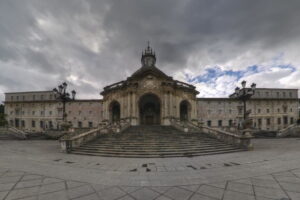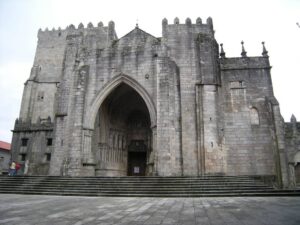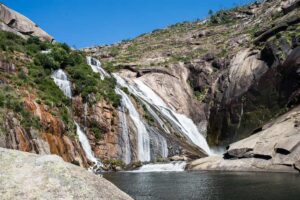
The pilgrimage experience in Spain is not limited to the famous Camino de Santiago. There is another route of great historical and spiritual value: the Ignatian Way. In this guide, we will explore how walking this route can serve as excellent preparation for later undertaking the great experience of reaching the Cathedral of Santiago.
We will examine its origin and history, the current itinerary, and the similarities and differences with the main Jacobean routes. By the end, you will understand why this pilgrimage can be the perfect training before heading to Santiago de Compostela.
Índice de contenidos
The Historical Origin of the Ignatian Way
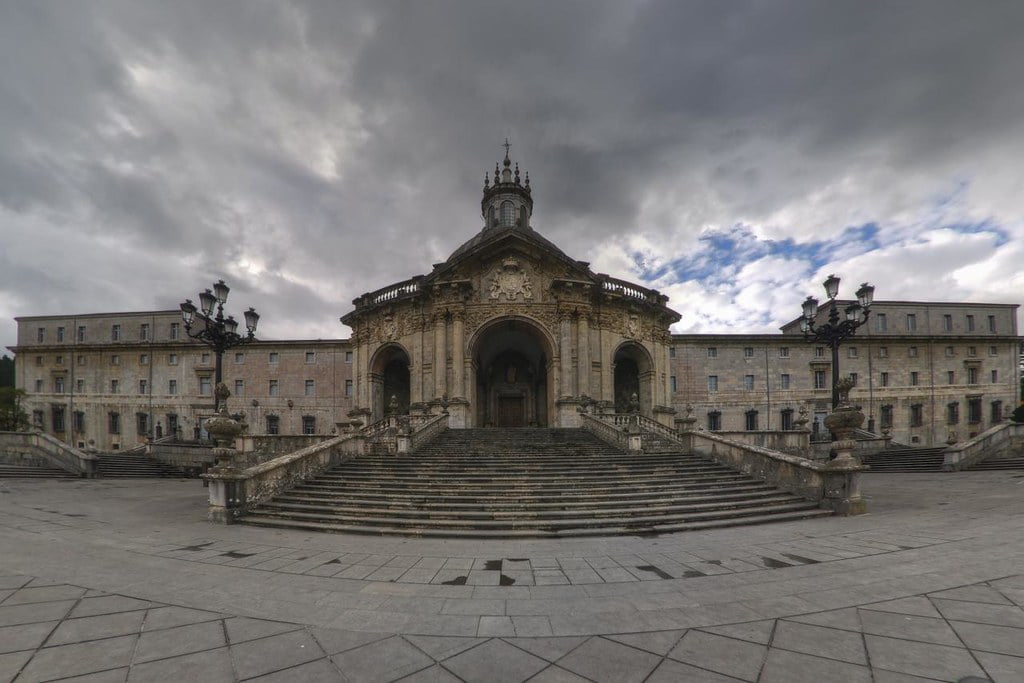
The Ignatian Way has its origin in the figure of Íñigo de Loyola (better known as Saint Ignatius of Loyola), founder of the Society of Jesus (the Jesuits).
In 1522, Íñigo undertook a transformative journey following his spiritual conversion. He set off from his birthplace in Loyola (Azpeitia, Basque Country) and walked approximately 650 km to the city of Manresa (Catalonia).
During the journey, he passed through iconic places such as the Sanctuary of Montserrat. Here, he shed his knight’s armour before the Black Virgin, symbolising the beginning of a new spiritual life. This personal journey marked the transformation of Íñigo “the soldier” into Ignacio “the pilgrim”, culminating in the cave of Manresa where he meditated intensely and laid the foundations for his Spiritual Exercises.
Today, that feat has become an officially recognised pilgrimage route. The modern route faithfully recreates the 1522 journey, allowing pilgrims to follow in the footsteps of Saint Ignatius.
The project to signpost and promote it gained momentum in the 2010s, supported by the Jesuit community, coinciding with the 500th anniversary of Ignatius’ conversion. In 2012, the route was officially recognised as a long-distance trail (GR-21), and since then it has been growing in prominence within Spain’s cultural and religious tourism.
The Ignatian Way Today: Route, Stages, and Challenges
The Ignatian Way stretches for approximately 650 km divided into 27 stages, passing through five autonomous communities of Spain: Basque Country, La Rioja, Navarre, Aragón, and Catalonia.
The journey starts at the Sanctuary of Loyola, passes through cities and towns full of history, and ends at the Cova de San Ignacio in Manresa. Along the route, the Ignatian pilgrim discovers a great diversity of landscapes: the green valleys of the Basque Country, the vineyards of La Rioja, the banks of the Ebro River in Navarre and Aragón, and the Catalan mountains crowned by the Montserrat Monastery.
Complete Itinerary of the Ignatian Way: Stages and Kilometres
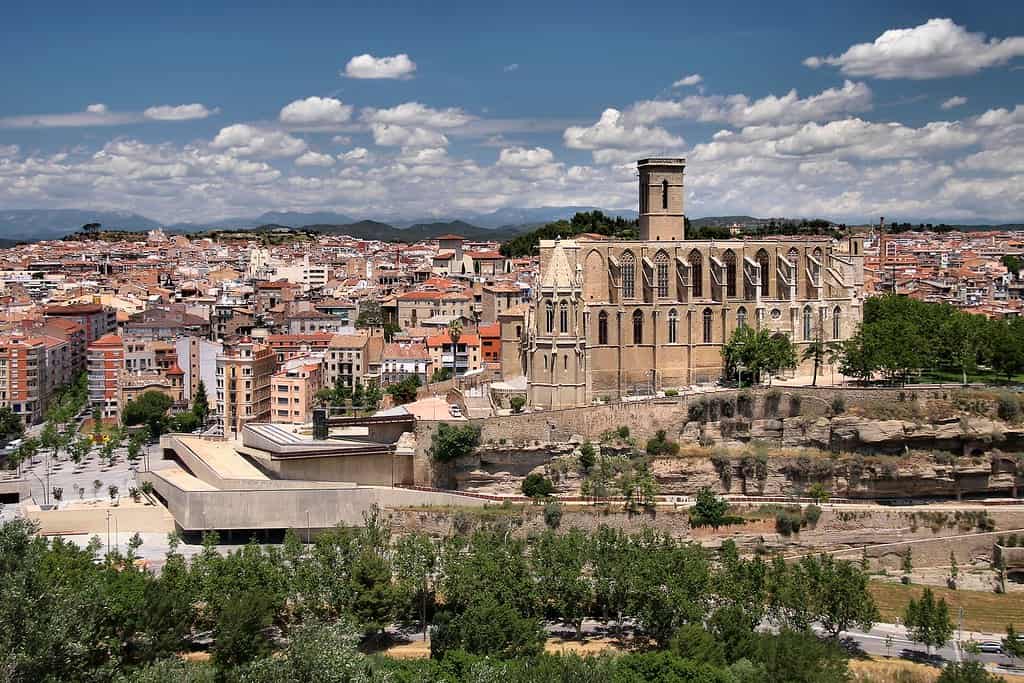
Below is the typical itinerary of the Ignatian Way, divided into 27 stages. Although there is no single way to divide them, this is the most common distribution among pilgrims:
- Stage 1: Loyola – Zumárraga (18.5 km)
- Stage 2: Zumárraga – Arantzazu (17.7 km)
- Stage 3: Arantzazu – Araia (21.4 km)
- Stage 4: Araia – Alda (25 km)
- Stage 5: Alda – Genevilla (22.8 km)
- Stage 6: Genevilla – Laguardia (27.3 km)
- Stage 7: Laguardia – Navarrete (27.3 km)
- Stage 8: Navarrete – Logroño (13 km)
- Stage 9: Logroño – Alcanadre (30.6 km)
- Stage 10: Alcanadre – Calahorra (21.5 km)
- Stage 11: Calahorra – Alfaro (23.1 km)
- Stage 12: Alfaro – Tudela (25.8 km)
- Stage 13: Tudela – Gallur (39.2 km)
- Stage 14: Gallur – Alagón (21.7 km)
- Stage 15: Alagón – Zaragoza (30.5 km)
- Stage 16: Zaragoza – Fuentes de Ebro (25.6 km)
- Stage 17: Fuentes de Ebro – Venta de Santa Lucía (29.6 km)
- Stage 18: Venta de Santa Lucía – Bujaraloz (21.3 km)
- Stage 19: Bujaraloz – Candasnos (21 km)
- Stage 20: Candasnos – Fraga (26.8 km)
- Stage 21: Fraga – Lleida (31.9 km)
- Stage 22: Lleida – Palau d’Anglesola (25.7 km)
- Stage 23: Palau d’Anglesola – Verdú (24.7 km)
- Stage 24: Verdú – Cervera (17 km)
- Stage 25: Cervera – Igualada (38.6 km)
- Stage 26: Igualada – Montserrat (27 km)
- Stage 27: Montserrat – Manresa (24.6 km)
Although divided into 27 stages, not all pilgrims complete the entire route. Some choose specific segments or combine parts on foot with transport for certain sections.
When completed in its entirety, it takes around 30 days of walking. Several stages exceed 25-30 km, with the longest being nearly 40 km (between Tudela and Gallur), posing a significant physical challenge. For this reason, prior physical preparation similar to any long-distance trek is recommended: walking training, appropriate footwear, and rest planning.
The route is well signposted with characteristic orange arrows painted on rocks and posts (unlike the yellow arrows of the Camino de Santiago). In addition, as it is an official GR trail, we will also find white and red long-distance trail markers on many sections.
Infrastructure and services
Unlike the busier Jacobean routes, the infrastructure is still limited in some areas. There are accommodations available on most stages (pilgrim hostels, rural houses, guesthouses, and even convents), but the options are, of course, more limited.
In isolated sections (for example, in the Aragonese steppe), there may be longer distances between towns with services, forcing the pilgrim to carefully plan water and food supplies each day.
Nevertheless, year after year, the support network grows: new hostels and information points have been established. Additionally, local communities are increasingly involved in welcoming walkers. Pilgrims can stamp an Ignatian credential (a passport similar to the Compostelana) at each stage, and upon finishing in Manresa, they can obtain a certificate accrediting their pilgrimage.
Effort and difficulty
The profile combines flat sections with others in medium mountains. There are no extreme high-mountain passes, but there are notable ascents, such as the climb to Montserrat in the penultimate stage, which requires good physical endurance.
Additionally, the weather varies from the rains of northern Spain to the dry heat of the Ebro Valley. For example, in summer, some stages in Navarra and Aragón can exceed 35°C, making it advisable to start the walk very early.
The solitude of the route (very few pilgrims daily) is another challenge: it is a quiet route, ideal for those seeking peace and quiet, but it also means walking for long periods without company or immediate help.
Currently, only a few hundred pilgrims complete the Ignatian Way each year (around 300-500 in recent years), compared to the hundreds of thousands who walk the Camino de Santiago. This low influx makes each encounter on the route meaningful, and the pilgrimage takes on a more introspective and personal nature.
A physical and spiritual training for the Camino de Santiago
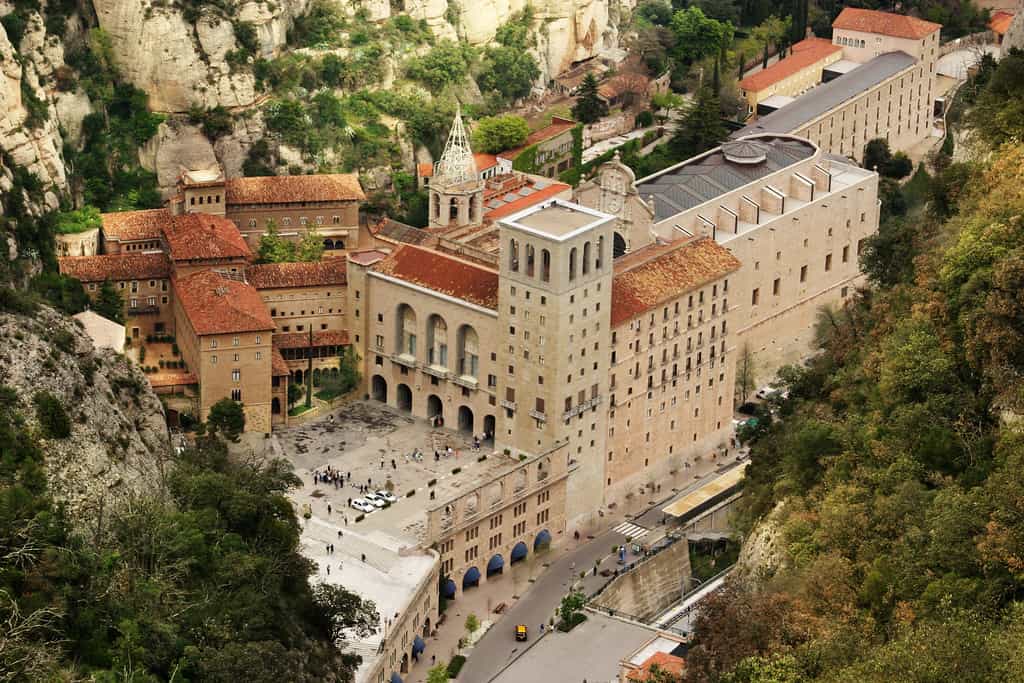
Walking the Ignatian Way is, in many ways, an excellent training for anyone planning to eventually reach the Cathedral of Santiago.
First, from a physical perspective, both are long-distance routes that demand endurance. If a pilgrim manages to complete the ~650 km from Loyola to Manresa, they will be more than prepared to tackle the ~800 km of the French route to Santiago or any other shorter route.
Along the pilgrimage, one gains practical experience: setting a daily walking rhythm, getting used to carrying the backpack, dealing with blisters or minor injuries, and understanding the importance of proper hydration and nutrition during the day. All this learning curve will be invaluable when facing bigger challenges later, helping to avoid rookie mistakes.
In addition to physical conditioning, it offers an exceptional mental and spiritual preparation. This route is designed as a path of introspection: many pilgrims experience it as a spiritual retreat on the move, thanks to the Ignatian references and meditation proposals that accompany it.
Walking virtually alone for days, one learns to manage their thoughts, overcome moments of low spirits, and find inner motivation to continue. Developing this mental strength is key to success on the Camino de Santiago. While there is more company here, moments of fatigue or doubt will still arise, where personal determination plays an important role.
Similarly, those who have faced the more complex logistics of the Ignatian Way (with fewer signs and services) will feel very comfortable on a Jacobean route where practically every town offers accommodation, and every junction is signposted.
Comparison with the main routes of the Camino de Santiago
The Camino de Santiago has multiple official routes, each with its own characteristics. Below, we briefly compare it with some of the more well-known Jacobean routes, highlighting similarities and differences:
- Camino Francés: this is the most popular Jacobean route, about 780 km from Saint-Jean-Pied-de-Port (France) to Santiago de Compostela. In this case:
-
- It hosts thousands of pilgrims at the same time during peak season, so you will never be alone.
-
- It has a very developed infrastructure: accommodation in almost every town, frequent bars and shops, and abundant signage with yellow arrows.
-
- The profile combines mountains (the Pyrenees at the start, O Cebreiro towards the end) with long flat sections (the central Meseta).
-
- The cultural richness also differs: while the Ignatian route focuses on the figure of Saint Ignatius, this route passes through medieval landmarks of the Jacobean tradition (monasteries, cathedrals, monumental towns).
-
- Both routes share the physical demand of walking around 25-30 km daily. However, the Camino Francés is easier to adapt the stages to thanks to the multitude of stopping options.
- Camino del Norte (coastal route): unlike the inland route of Ignatius, this path follows the Cantabrian coast with maritime landscapes.
An example of this route is the Camino del Norte from Santander to Gijón, a stretch of around 200 km that skirts the beaches and cliffs of the Cantabrian Sea. This alternative features moderate difficulty stages with constant ascents and descents, passing through tourist towns such as Santillana del Mar, Llanes, or Ribadesella.
- In terms of foot traffic, it is less busy than the French route, but still considerably more than the Ignatian route: You will find pilgrims regularly, although in smaller numbers compared to the main route.
- The infrastructure is generally good, but with fewer accommodation services than the French Way and some rural sections.
- Portuguese Way (coastal variant): The traditional route runs from Porto to Santiago, with an option to choose between the inland route or the coastal route. The coastal option is highly appreciated for its views of the Atlantic.
For example, the Portuguese Way of St. James from Porto to A Guarda follows the coast of Portugal towards Galicia. It is approximately 160-180 km from the city of Porto to the border at A Guarda (Galicia), passing through fishing and beach towns such as Viana do Castelo and Caminha.
- This section is characterised by flat coastal trails and sea breeze, making it a physically more manageable route than many mountainous stages of the Ignatian Way.
- Accommodation options and signage have improved significantly in recent years due to the increase in pilgrims, especially after the pandemic.
- The social experience is peaceful, similar to the previous example in terms of the number of walkers, and you can enjoy the warm hospitality of the Portuguese villages.
- Most pilgrims continue from the border to Santiago along the Galician coast. The Way from A Guarda to Santiago de Compostela corresponds to the last part of this route. From here, it covers approximately 150 km to Santiago, usually in 6 or 7 stages. It passes through towns such as Baiona, Vigo, Pontevedra, and Redondela (where it joins the central Portuguese Way) before heading towards Compostela.
- This final stretch combines coastal sections with access to the green interior landscape of Galicia.
-
- Compared to the end of the Ignatian Way, this stretch offers more services and companionship. As the last 100+ km to the destination, there is often an increase in pilgrims joining in to reach the Compostela, making the trails lively.
-
- However, it is still less crowded than the French Way.
(It is worth mentioning that there are other prominent Jacobean routes, such as the Primitive Way from Oviedo or the Silver Way from Seville, among others. Each has its own identity, but we have highlighted the most popular for comparison with the Ignatian experience.)
Can it be done the other way around? Connections with the Camino de Santiago
Yes, it can definitely be done in reverse, from Manresa to Loyola. Although it is not the official route, some pilgrims choose this option to combine Ignatian spirituality with their subsequent entry into one of the Jacobean routes. Upon reaching the Basque Country, there are several options to connect with the Camino de Santiago.
From Loyola (Azpeitia), you can connect to the Northern Way through nearby cities such as Zarautz or Deba. This way, you can join the Cantabrian coast towards Santiago.
However, even following the usual direction, it is possible to link to the French route during the journey. There are natural connections at two key points:
- In Navarra: Near Tudela, the two routes are almost tangent.
- In La Rioja: Both routes pass through the capital of La Rioja.
Both experiences offer two complementary ways of pilgrimage. Rather than being exclusive, they can be experienced as successive stages of a personal journey.
The Ignatian Way almost acts as a “pilgrim’s training”. Those who have completed the journey from Loyola to Manresa tend to approach the route to Compostela with more confidence, appreciating the extensive Jacobean infrastructure (accommodation, constant signage, and even the option of logistical support through a specialised Camino de Santiago agency if desired).
But beyond physical preparation, the main value lies in the inner transformation: the silence and reflection of St. Ignatius’ steps prepare the pilgrim to experience the Camino de Santiago with a more receptive, humble attitude, open to the teachings of the journey.
Whether you seek a personal challenge or wish to strengthen your spirit before joining the crowd of pilgrims heading to Santiago, considering the Ignatian Way as a prologue is a highly recommended idea. Both routes offer unique and complementary experiences that will shape you as a pilgrim and gift you unforgettable experiences for both the body and the soul. ¡Aúpa Ignacio!!

